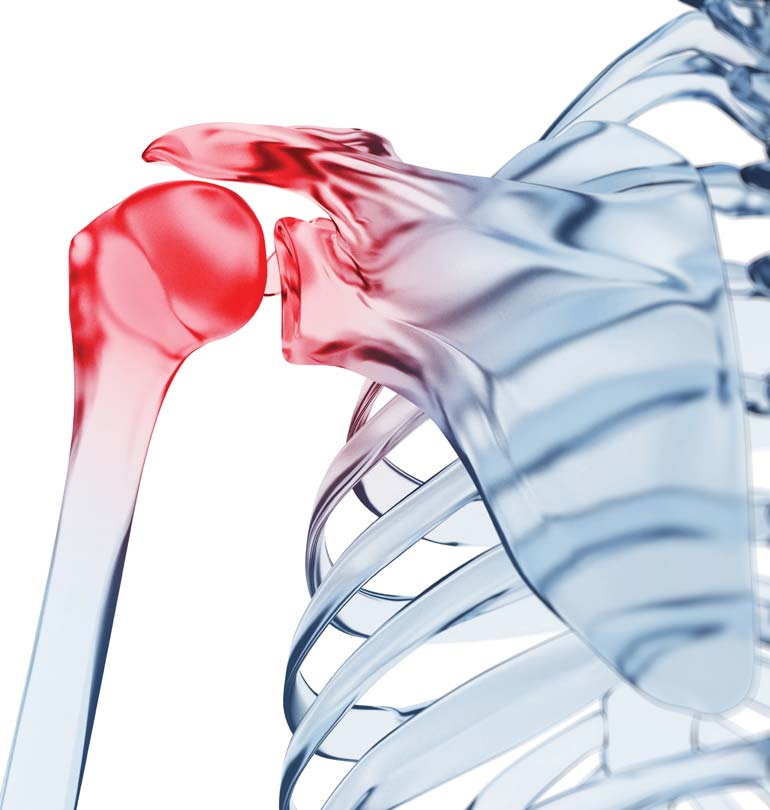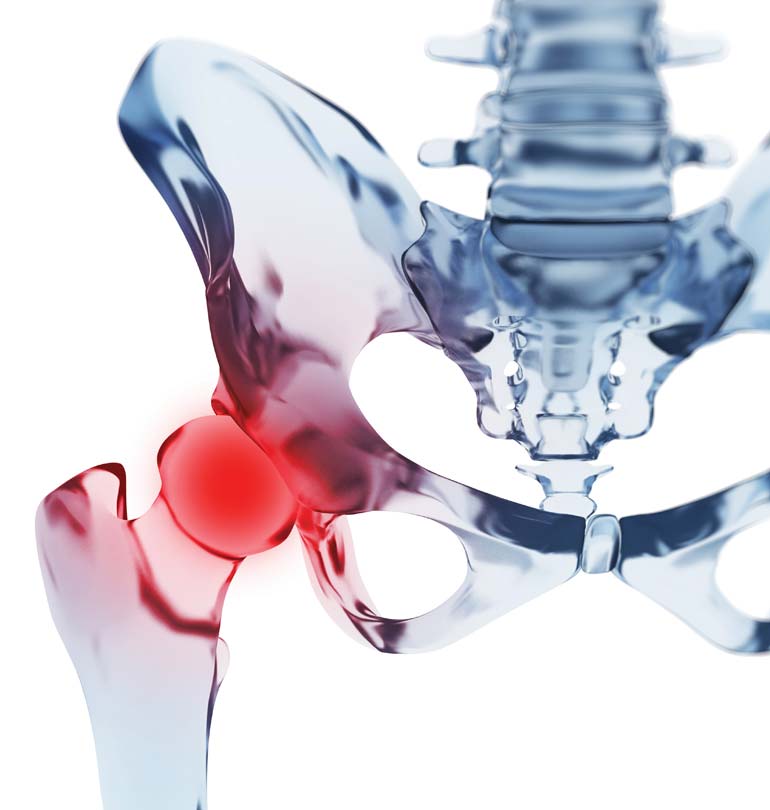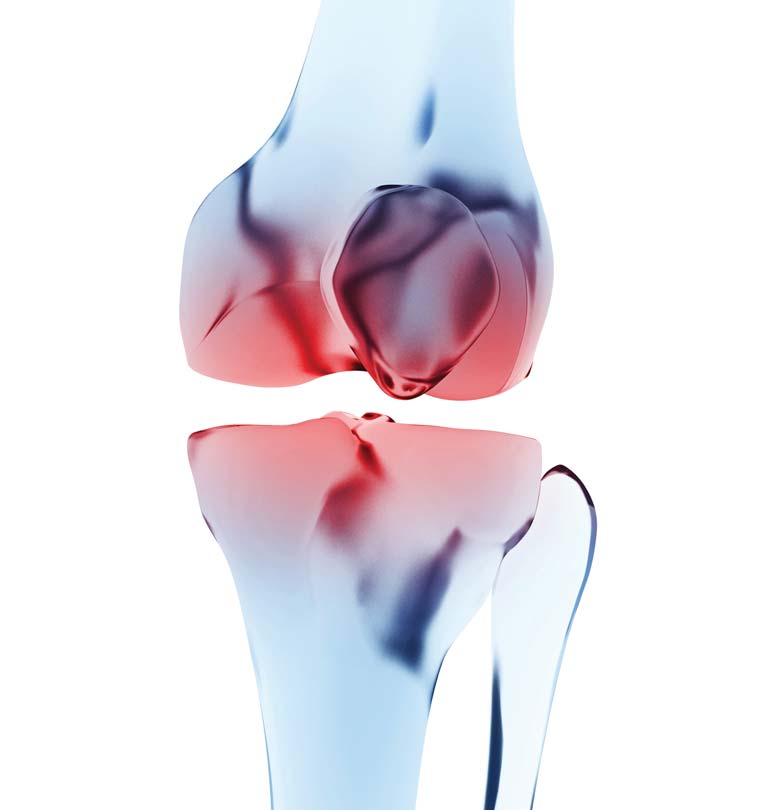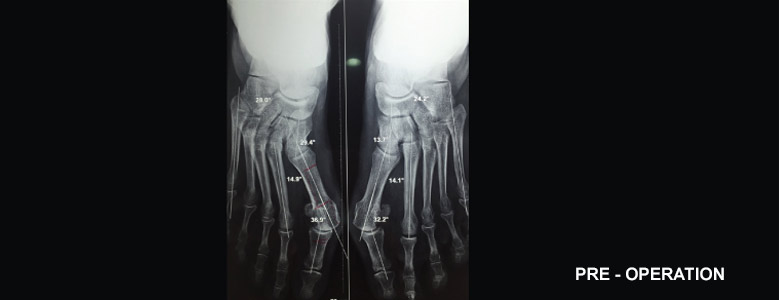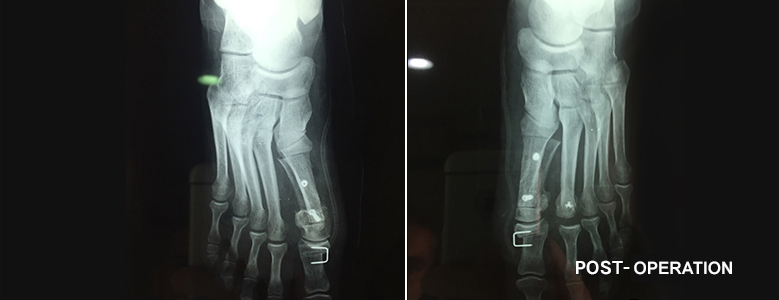
PATHOLOGIES
Hallux valgus
Hallux valgus is a lateral deviation of the hallux regardingt the first metatarsal associated with lateral excrescence, commonly called bunion.
The word hallux valgus comes from the Latin word hallus (big toe) and valgus (turned outside).
The causes of hallux valgus are not well defined, but a number of factors are highlighted:
- The use of certain footwear: high heels, pointy edges shoes with forefoot compression
- Genetic factors: when the forefoot shape is wide ,feet are called "Egyptian"
- Age and menopause enhance hallux valgus
DIAGNOSTIC
Hallux valgus mainly concerns women (35 females to 1 male) and starts for 90% of cases between 40 and 50 years.
It causes discomfort and foot pain when walking ,difficulties to put on shoes with local inflammation called bursitis.
Eventually, its progressive worsening generates an inevitable distortion of neighboring toes, becoming themselves a source of pain. as follows:
- The first metatarsal moves inside (see figure 1) and rises causing a bony prominence, a source of conflict with the shoe, causing a painful bursitis (subcutaneous inflammation) and exostosis
- While the big toe moves out under the constraint of pressure and the action of flexor and extensor tendons which "take the rope" deformation
HALLUX VALGUS SURGERY
Hallux valgus surgery, the only operation which allows the correction of these anatomical disorders,should be considered whenever functional discomfort (pain, difficulty footwear ...) requires it.
Hallux valgus or foot bunion is never an emergency and must be considered at the most appropriate time for the patient, according to his work and family as postoperative period is often spread over the first 3 postoperative month.
The surgery procedure is variable, adapted to the type of hallux valgus, to the first radius morphology ,metatarsal pallet and the existence of disorders of other toes.
In recent years, the surgical treatment conception of hallux valgus has evolved into an overall treatment of the forefoot deformities in the 3 plans of space and not only in the horizontal plan.
Meanwhile, foot surgery techniques have also evolved ,by reserving interventions on soft tissues (Mac Bride, Petersen) for small distortions and by increasingly developing bone surgery to correct the deformity by reorienting the bone.
Thus, new osteotomies (Scarf, Weil, Chevron ...) appeared giving the chance to make a three-dimensional correction of distortions by cutting and reorienting the bone with more reliable and longer lasting results. Meanwhile, the surgery aims to be less aggressive with the emergence of "minimally invasive" techniques and the advent of foot Percutaneous surgery mainly intended for small distortions or toe surgery.
LES OTEOTOMIES
- SCARF osteotomy of the 1st metatarsal:
Developed in France for the past fifteen years, this osteotomy offers the possibility to perform a three-dimensional correction of hallux valgus distortions by allowing the translation, rotation and shortening of the 1st metatarsal with a solid osteosynthesis. - Osteotomy in chevron of 1st metatarsal:
Osteotomy line in chevron, Shorter than a SCARF on the foot side view, is located in the metaphysis-diaphysis area which is the widest of the metatarsal distal part. Thus, it allows a greater possibility of hallux valgus distortions correction yet with osteosynthesis stability, more precarious than SCARF.
Hospitalization, postoperative, rehabilitation after treatment of the hallux valgus
This foot surgery for hallux valgus treatment , or foot bunion, usually requires hospitalization of 2 to 3 days. Admission is usually done the morning of the operation.
If it is possible to operate 2 feet at the same time, we rather recommend two interventions shifted in time to allow a walking resumption easier without loss of autonomy.
Work resumption will take place the day following the intervention, avoiding to press on the hallux and ideally wearing a special shoe for the 1st postoperative month. This wide shoe is rarely compatible with driving.
A medical appointment for checking is usually scheduled one month after the intervention, with a radiograph, to allow you to walk without the special shoe and start physiotherapy.
Because of the possibility of foot edema which can disturb footwear donning for 2 to 3 months, the off work period is variable, adapted to the situation of each patient,work resumption ranges most commonly between 1-2 months.
In all cases, there must be a three months period to fully experience the surgery benefits and resume all sports.

